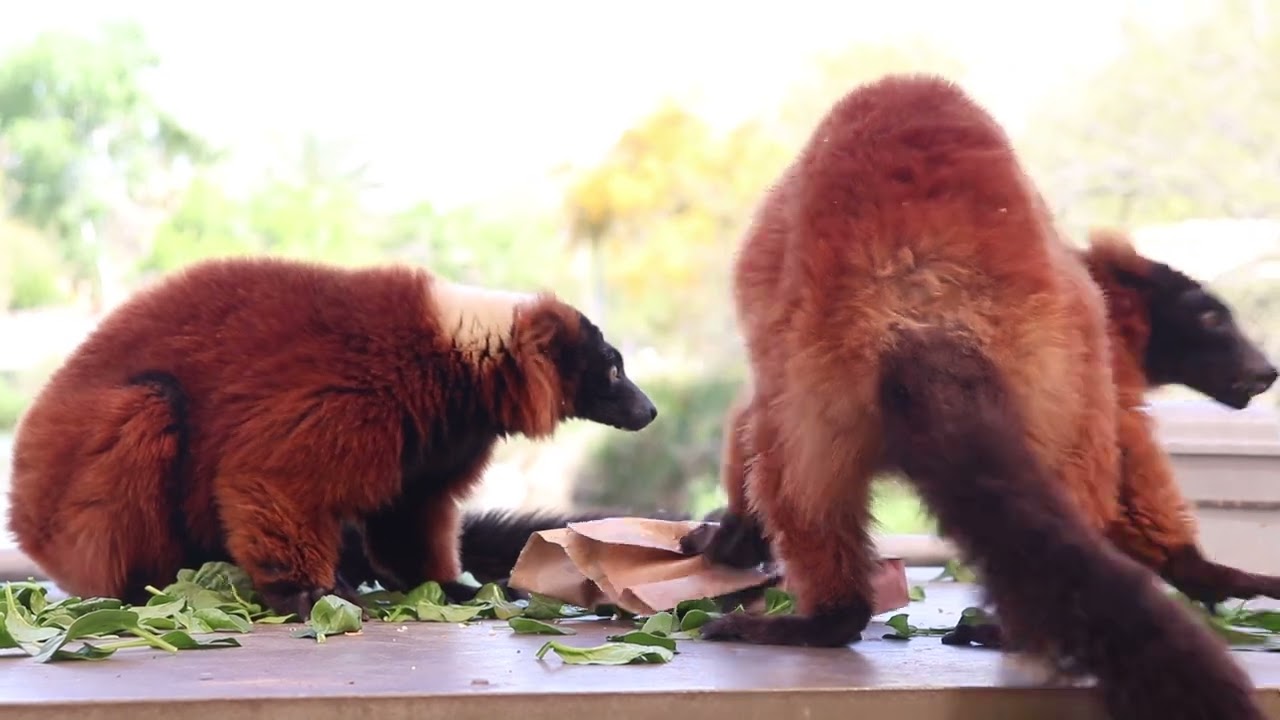– The role of red-ruffed lemurs in March Madness predictions and their significance in wildlife conservation efforts
– The unique behaviors and characteristics of red-ruffed lemurs that make them suitable for public engagement activities
– Strategies for zoo management to connect educational content with conservation goals
– The impact of engaging the public with wildlife conservation through interactive activities
—
Recently, a captivating method to draw public attention to wildlife conservation has been through the unexpected involvement of animals in activities outside their natural context, such as red-ruffed lemurs predicting the Final Four winners of the March Madness tournament. This intriguing involvement of wildlife serves as a gateway to not only engage a wide audience but also to shine a spotlight on the conservation status and needs of these remarkable creatures.
Red-ruffed lemurs, native to the rainforests of Madagascar, stand out due to their striking appearance and complex social behaviors. These animals possess extraordinary intelligence and a keen sense of smell, allowing them to participate in activities such as selecting winners in the March Madness tournament. Though appearing whimsical on the surface, these activities are grounded in the lemur‘s natural behaviors and inclinations, making the event not only entertaining but also an educational opportunity.
By involving red-ruffed lemurs in March Madness predictions, zoos foster a unique connection between the audience and wildlife conservation. This approach leverages the tournament’s widespread popularity to introduce an educational layer to the audience’s experience. The aim is to transform their curiosity into a deeper interest in the lemurs’ natural habitat, social structure, and the threats they face due to deforestation and habitat destruction in Madagascar.
Zoo management plays a crucial role in designing these activities to ensure they are engaging and informative. Careful planning is required to balance entertainment value with educational content. Activities like the March Madness predictions by red-ruffed lemurs are paired with informational signage, talks by zoo educators, and multimedia presentations that delve into the critical conservation status of these animals.
Moreover, these public engagement initiatives directly fund and support conservation efforts. Many zoos participating in similar activities channel a portion of event proceeds to support conservation projects in the wild, creating a tangible link between public engagement and the advancement of wildlife preservation.
This innovative approach to conservation education illustrates the power of interactive activities to bridge the gap between the public and distant conservation struggles. Witnessing red-ruffed lemurs engage in an activity as relatable as predicting the Final Four winners of March Madness inspires individuals to learn more about these animals. This curiosity sparks a broader awareness and concern for endangered species, guiding more people to support global conservation efforts.
In essence, the role of red-ruffed lemurs in activities like the March Madness predictions goes beyond mere novelty. It embodies a strategic effort to promote wildlife conservation through engagement and education. As society continues to look for innovative ways to connect with nature and support conservation, initiatives like this provide a promising path forward. Through such engaging activities, zoos can significantly amplify the message of conservation, drawing more individuals to support the vital cause of preserving our planet’s incredible biodiversity for future generations.
*****
Source Description
Comet, Mantabe and Ankavia, red-ruffed lemurs, picked the winners of the NCAA’S March Madness Men’s Basketball Final Four games. Their picks were the UConn Huskies and Purdue Boilermakers.


